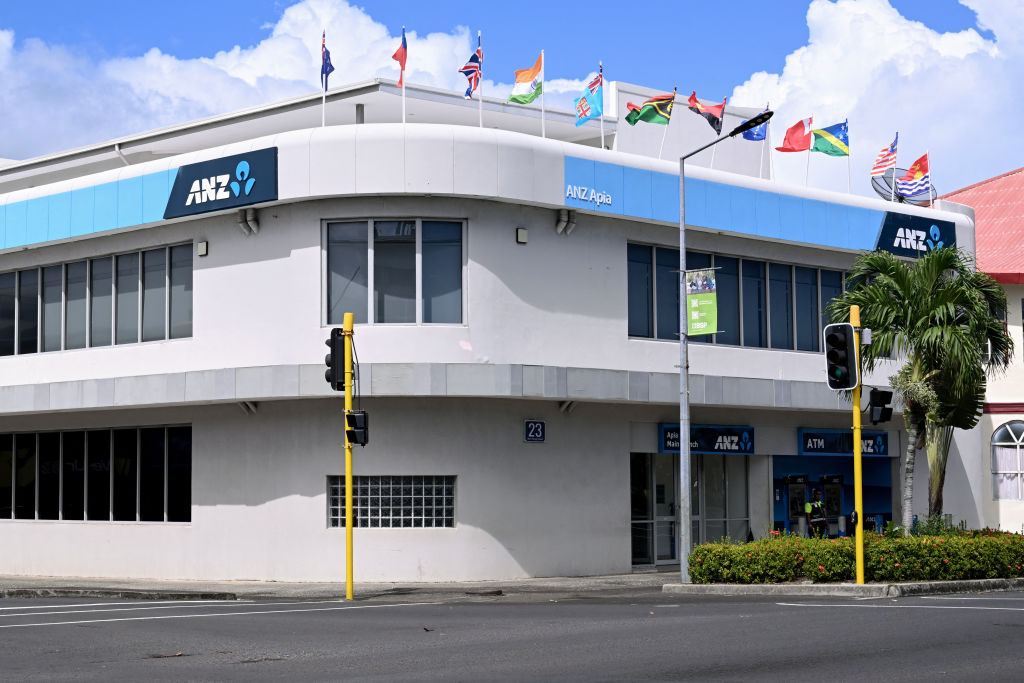With Beijing increasing its influence in the Pacific, Australia is focusing on the basic necessities: banking and labour mobility.
The withdrawal of major banks from Pacific countries poses significant socio-economic risks to the region as well as considerable inconvenience to individual customers, so Australia—along with the United States and New Zealand—is stepping in to assist as part of its ongoing effort to win the allegiance of the island states.
Australia is also expanding a labour mobility scheme, with the initiative forming part of efforts to counteract the increasing influence of Beijing.
Last year, Australian Prime Minister Anthony Albanese and U.S. President Joe Biden announced the formation of the Pacific Banking Forum amid growing concerns about the loss of correspondent banking relationships in the region.
Correspondent banks provide banking services to other financial institutions overseas. So, if someone in Samoa wanted to send money to someone in Australia, where their local bank may not operate, an Australian bank will facilitate the transaction on behalf of the Samoan bank.
This type of partnership between financial institutions has declined in the past decade, but the fall in the Pacific has been particularly steep. Between 2011 and 2022, the region lost about 60 percent of its correspondent relationships.
Aside from affecting international trade by making foreign payments extremely difficult, this is a problem at an individual level because many Pacific communities rely on money sent home by family members working overseas.
In 2022, such transfers amounted to 44 percent of Gross Domestic Product (GDP) in Tonga, 34 percent in Samoa, and 15 percent in Vanuatu.
Factors such as the vast distances and small populations, as well as the difficulty of keeping abreast of different laws and risks, all influence banks’ decisions on whether to maintain services to the Pacific.
As a result, the Marshall Islands are left with one bank (which may also close) and even services in larger Pacific countries such as Samoa, Tonga, and Tuvalu have been limited. And where they still operate, they’re provided at far higher cost: in 2022, the average remittance cost in the Pacific was 9.1 percent of the transaction value, more than triple the global target of 3 percent.With so much at stake for governments and people throughout the Pacific, securing banking services offers the potential for considerable goodwill.
The Australian Government has been keen to find a solution and is now in the final phases of talks with ANZ bank to ensure it continues to offer financial services in nine Pacific nations after initially saying those operations weren’t profitable.
Connecting the Pacific with global finance was “one of Australia’s highest foreign and economic policy priorities,” Treasurer Jim Chalmers said.
Australia is also working to ensure the integrity of a labour mobility scheme that employs Pacific workers amid concerns they were being exploited.

On Oct. 23, the Lowy Institute published an analysis of the Pacific Australia Labour Mobility (PALM) scheme, which found that it “leaves workers vulnerable by design and delivers economic benefits weighed heavily in Australia’s favour.” However, the report did acknowledge it had also “generated life-altering income for migrant workers and their families.”
A recent survey by the World Bank indicated that some workers could earn up to 10 times what they could make in their own countries.
Employers have to pay workers the equivalent of 120 hours over four weeks to make up for unpredictable hours in the sectors in which they’re employed—agriculture, meat processing and aged care, among others.
A recent assessment by the Employment Department found a third of agriculture and horticulture employers with short-term workers under the scheme were complying with minimum hours requirements.
“This ensures workers, who are not allowed to pick up other work in Australia, can afford to cover their accommodation and other expenses while offering strong flexibility for employers,” Employment Minister Murray Watt said.
The Department of Foreign Affairs and Trade (pdf) has estimated that, between 2018 and 2022, employers made $289 million (US$188 million) in direct profit from PALM workers.
The scheme enabled those workers to send home a total of $184 million, but they also paid $136 million to Australian businesses for their day-to-day living expenses, spent $74 million in rent, and were levied $70 million in tax for a welfare system they could not access.
A pilot under the scheme has been announced for Papua New Guineans to work and train in the Australian early childhood sector, with the first group of 15 to arrive in the Northern Territory in early 2025.
The Australian-accredited educators will be employed in Katherine and Alice Springs where there are skills shortages.
The PALM scheme has 31,230 participants across 485 employers as of September 2024.
AAP contributed to this story.

